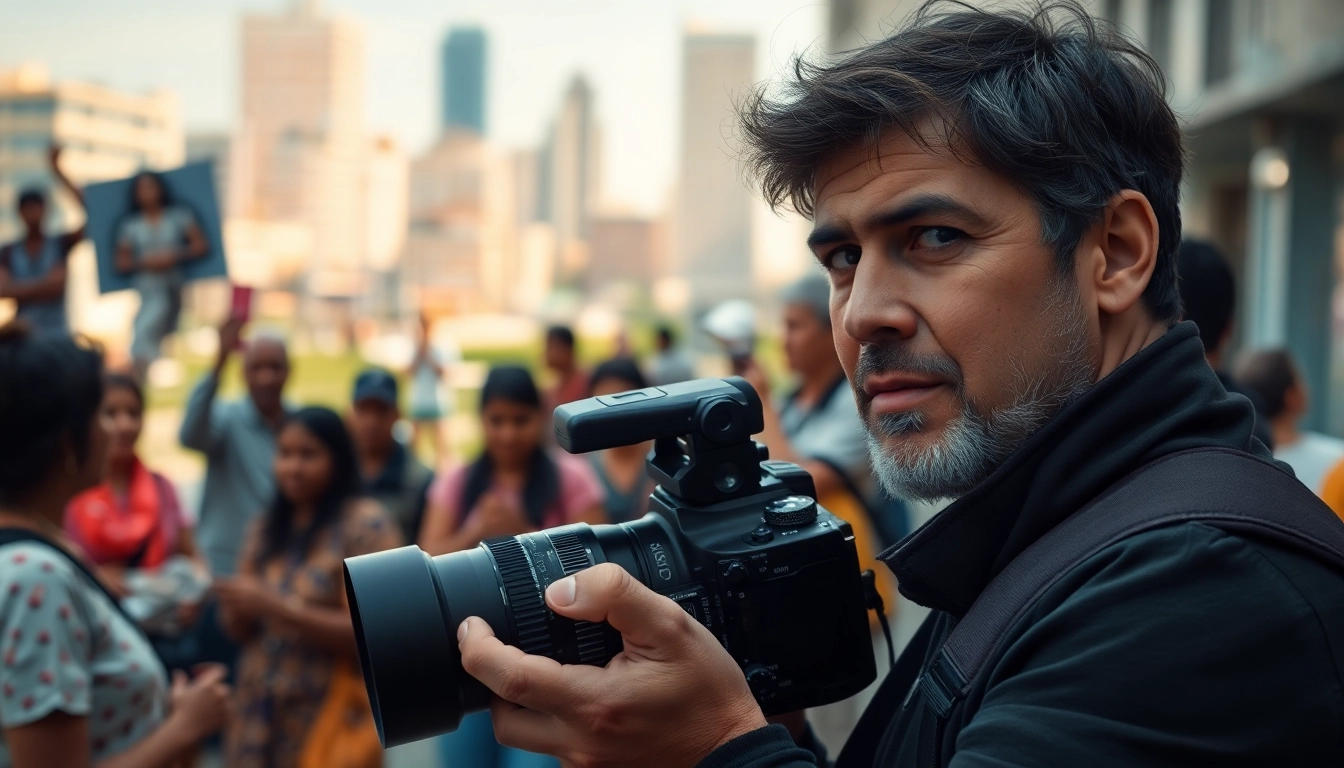Understanding the Essence of Stories & Documentaries
Defining What Makes a Great Documentary
A great documentary transcends the mere presentation of facts or topics; it weaves a narrative that resonates deeply with audiences. At its core, a documentary combines factual storytelling with artistic expression, providing a lens through which viewers can examine subjects that may be foreign to them. This medium’s strength lies in its ability to evoke emotional responses, raise awareness, and ultimately prompt societal change.
Central to the effectiveness of a documentary is its structure. A compelling arc—a beginning that introduces the subject, a middle that develops the narrative, and an end that resolves the conflict or presents insights—is crucial. It shapes how the audience perceives the content and influences how they engage with the subject matter. For filmmakers, the challenge is to craft these elements in ways that feel authentic and engage viewers on both an intellectual and emotional level.
The Impact of Stories on Audience Engagement
Stories have been the cornerstone of human communication for millennia. They allow people to connect with experiences beyond their own, fostering empathy and understanding. Documentaries harness this power by presenting real-life stories that explore complex issues, diverse cultures, and individual experiences.
When viewers invest in a story, they often feel a personal connection with the characters or subjects, propelling engagement levels. This emotional connection can lead to discussions, shares, and a genuine desire to learn more about the documentary’s topic. Thus, effective storytelling in documentaries not only informs viewers but also inspires action and change.
Key Elements in Crafting Compelling Narratives
Several elements contribute to the effectiveness of documentary storytelling:
- Character Development: Strong, relatable characters anchor the narrative, allowing viewers to connect emotionally.
- Conflict: Introducing a central conflict creates tension, prompting viewers to keep watching to see how it resolves.
- Visual Aesthetic: High-quality visuals support the storytelling and enhance viewer engagement.
- Sound Design: Soundtracks and sound effects can evoke stronger emotional responses and set the tone.
- Editing: Thoughtful editing structures the narrative flow, creating a rhythm that guides the audience’s experience.
Types of Stories & Documentaries
Exploring Various Genres and Themes
Documentaries can be categorized into various genres, each with its unique storytelling techniques and thematic focuses. Some popular genres include:
- Biographical Documentaries: These focus on the life stories of individuals, shedding light on their experiences, achievements, and contributions.
- Social Issue Documentaries: This genre tackles pressing societal issues, raising awareness and prompting discussions. Topics may include environmental concerns, human rights, or cultural challenges.
- Travel and Cultural Documentaries: These explore different cultures and places, offering insights into lifestyles, traditions, and global diversity.
- Historical Documentaries: Here, filmmakers delve into significant events or eras, providing audiences with context and perspective on past happenings.
- True Crime Documentaries: A compelling genre that investigates real-life crime cases, often generating significant discussions around justice and morality.
Cultural Significance of Stories in Documentaries
The narratives presented in documentaries often reflect and shape our understanding of culture. Through stories, filmmakers can preserve important cultural traditions or critique social norms. Documentaries serve as a mirror to society—illuminating challenges or celebrating milestones.
For instance, documentaries like “13th” explore systemic racism in the United States, combining historical context with compelling storytelling that challenges viewers to rethink social structures. Such films contribute to cultural conversations, encouraging audiences to engage more critically with fundamental societal issues.
Case Studies: Successful Stories & Documentaries
Successful documentaries often combine unique narratives with pressing social issues. For example, “Won’t You Be My Neighbor?” artfully narrates the life of Fred Rogers, emphasizing themes of kindness and compassion. By humanizing a beloved figure, it invites viewers to reflect on their values and relationships.
Another remarkable case is “My Octopus Teacher,” which showcases an unusual friendship between a diver and an octopus. The documentary not only explores marine life but also highlights the interconnectedness of all living beings, resonating deeply with audiences seeking both beauty and emotional depth in documentary storytelling.
Production Techniques for Powerful Stories & Documentaries
Essential Equipment and Technology
Creating compelling documentaries requires the right equipment. While the quality of storytelling is essential, technical aspects can significantly impact the end product:
- Cameras: High-definition cameras, whether DSLRs or professional cinema cameras, capture clear imagery. Using stabilizing equipment like gimbals can improve footage stability.
- Audio Equipment: Quality audio is just as important as visuals. Employing external microphones, boom poles, and audio recorders can enhance sound capture.
- Lighting: Proper lighting sets the mood of the documentary. Whether using natural light or artificial setups, lighting influences how viewers perceive scenes.
- Editing Software: Familiarity with software like Adobe Premiere Pro or Final Cut Pro allows filmmakers to piece together the story effectively and make necessary adjustments.
Filmmaking Best Practices and Techniques
Documentary filmmaking encompasses a range of best practices that can lead to successful productions:
- Thorough Research: Understand your subject matter deeply. This includes historical context, relevant facts, and cultural nuances.
- Planning and Scripting: While documentaries often have a fluid structure, planning key segments and visuals beforehand can help maintain focus.
- Flexibility During Shooting: Be ready to adapt. Real-life events may not always adhere to your script, so staying flexible allows for organic storytelling.
- Engaging B-Roll: Acquiring supplementary footage enriches the story and fills in gaps, offering a deeper viewing experience.
Interviewing: Capturing Authentic Voices
Interviews are a cornerstone of many documentaries, providing personal insights and emotional depth. Here are several techniques for effective interviewing:
- Establish Trust: Create a comfortable environment where subjects feel safe to share their stories. Establishing rapport can lead to more honest and revealing testimonies.
- Ask Open-Ended Questions: Encourage expansive responses rather than simple yes/no answers. This invites interview subjects to share more profound insights.
- Listen Actively: Pay attention to subjects’ responses, allowing follow-up questions to flow naturally based on their answers.
- Be Respectful: Acknowledge the sensitivity of topics. Respect and empathy are vital when discussing personal or traumatic experiences.
Maximizing Reach and Engagement for Stories & Documentaries
Effective Marketing Strategies for Documentaries
Market strategy is essential in ensuring a documentary reaches its target audience. Consider these strategies:
- Film Festivals: Submitting your documentary to film festivals can attract attention and awards, increasing its credibility and visibility.
- Trailers: Create a compelling trailer that encapsulates the essence of the documentary, enticing viewers to learn more.
- Screening Events: Hosting local screenings allows filmmakers to engage with viewers, answer questions, and promote discussions around the documentary.
- Press Releases: Sending out press releases to local media can generate buzz and encourage conversations surrounding the documentary’s themes.
Utilizing Social Media to Boost Visibility
Effective use of social media platforms can significantly elevate a documentary’s profile. Strategies include:
- Content Teasers: Regularly share behind-the-scenes content, including interviews, clips, and production snippets to keep audiences engaged.
- Collaborate with Influencers: Partnering with bloggers, YouTubers, or other influencers can help reach diverse audiences who might resonate with the documentary’s themes.
- Create Hashtags: Foster conversations on social media by creating unique hashtags related to the documentary, encouraging viewers to share their thoughts.
Collaborations and Partnerships for Greater Impact
Building partnerships can enhance the reach and impact of documentaries:
- NGOs and Community Groups: Collaborate with organizations that align with the documentary’s themes to promote screenings and discussions.
- Educational Institutions: Work with schools or universities for educational screenings, creating an opportunity for dialogue among students and educators.
Evaluating the Success of Your Stories & Documentaries
Measuring Audience Impact and Reception
Success in documentary filmmaking is not just about viewership numbers. Assessing the documentary’s impact involves looking at audience reactions and engagement:
- Viewer Feedback: Collect feedback through surveys or social media interactions to gauge how audiences felt about the film.
- Social Media Metrics: Monitor shares, comments, and likes to understand the online impact and resonance of the documentary.
- Follow-Up Engagement: Evaluate whether viewers are discussing the themes presented or taking action related to the documentary’s message.
Gathering Feedback for Future Projects
Continually seeking input can refine future documentaries. Consider these methods for gathering feedback:
- Focus Groups: Inviting small groups to provide insights into the documentary’s effectiveness can reveal strengths and areas for improvement.
- Public Screenings: Hosting public screenings followed by Q&A sessions can provide immediate feedback and foster discussion.
Adapting and Evolving Your Storytelling Approach
Feedback should inform future projects, enabling filmmakers to evolve their storytelling methods. Addressing audience preferences or critiques can enhance the impact of future documentaries. Adapting to changes in the industry, technology, and audience engagement trends is critical for sustained success.
In conclusion, the journey of creating impactful documentaries is complex but rewarding. By harnessing the power of storytelling, engaging viewers meaningfully, and continuously assessing impact, filmmakers can create documentaries that not only entertain but also inform, inspire, and drive societal change. For those delving into the world of Stories & Documentaries, understanding these foundational elements is crucial for crafting rich, powerful narratives that resonate long after the credits roll.



